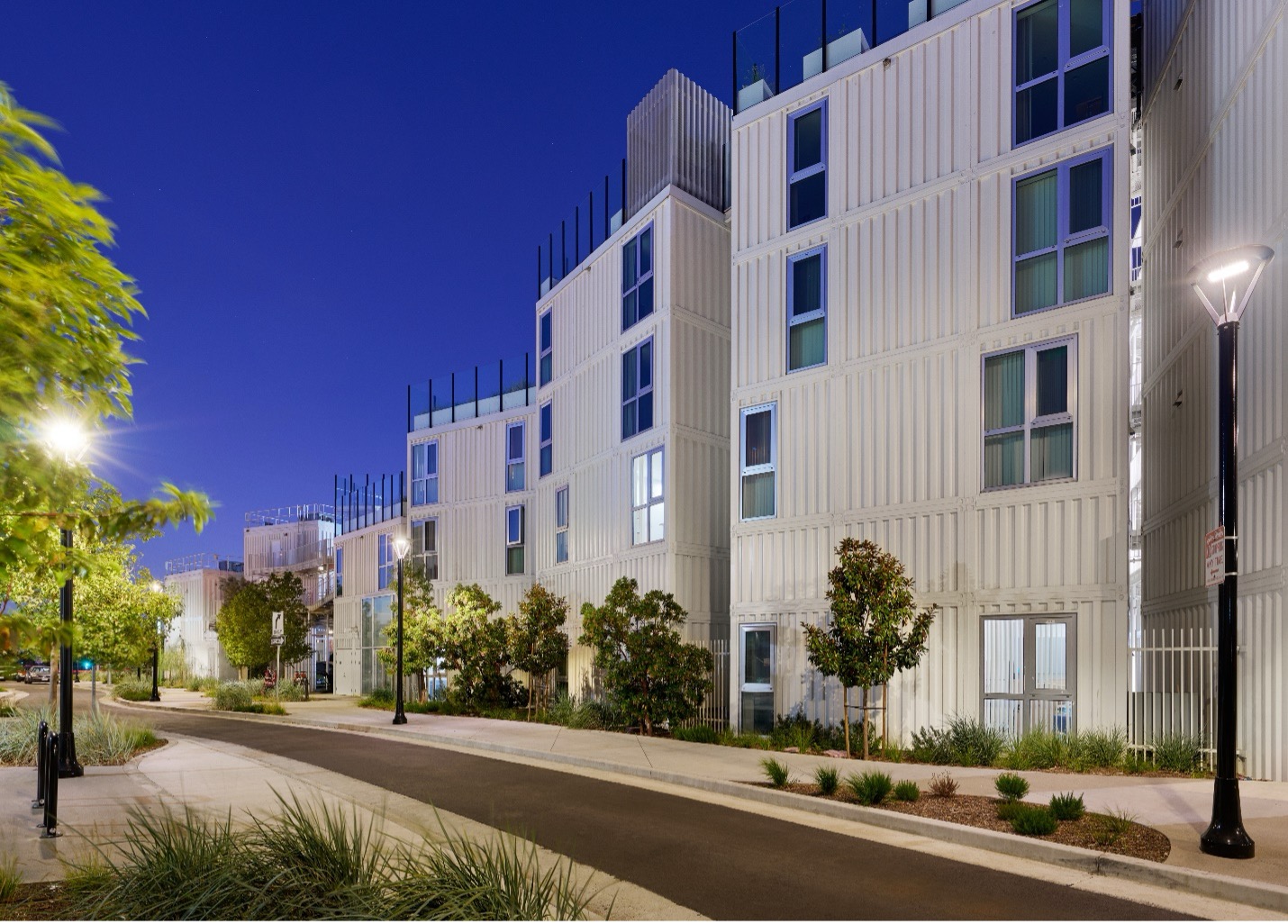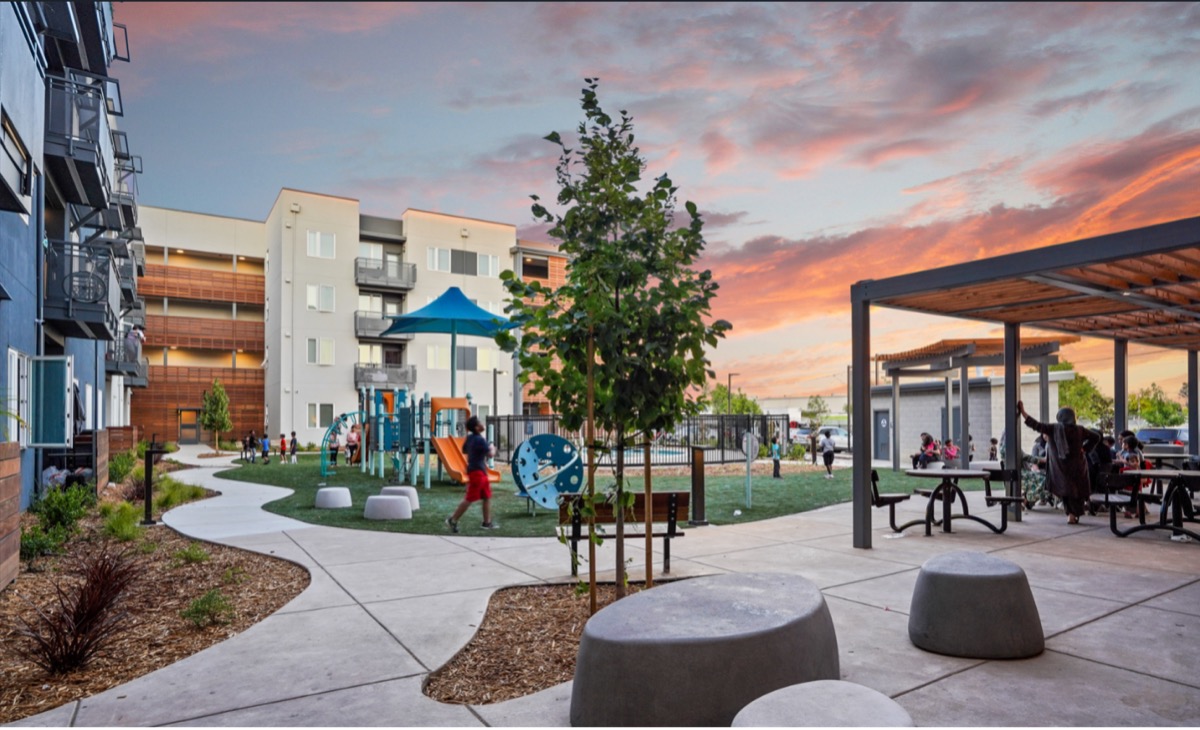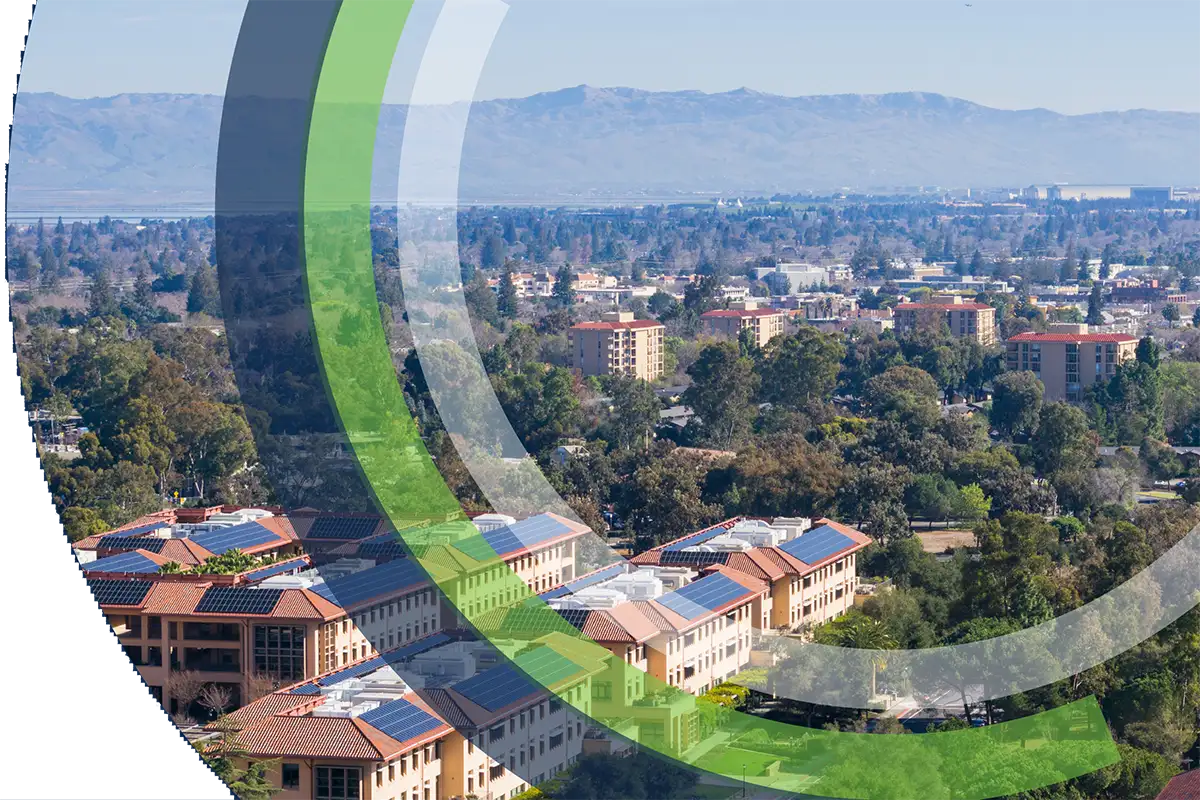Facilitating Multisectoral Gatherings to Leverage Energy and Housing Funding
Fostering relationships between California’s housing and energy agencies and to provide leaders with knowledge and ideas to work together and meaningfully advance shared goals.

California Energy and Housing Agencies Multisectoral Gathering
Keys to Success
Create Deep Partnerships between California's Energy and Housing Agencies to Lead Programs
Program Snapshot
-
Goal: Foster relationships between California’s housing and energy agencies and to provide leaders with knowledge and ideas to work together and meaningfully advance shared goals.
-
Facilitators: Funded through the Wells Fargo Foundation, the Global Policy Leadership Academy (GPLA) and Community Sustainability Partners (CSP) team partnered with California Housing Partnership (CHP) and the Rocky Mountain Institution (RMI) to plan and facilitate these workshops.
-
Agencies Involved:
-
Structure:
-
One Climate Agency-only gathering
-
One Housing Agency-only gathering
-
One Housing and Climate Agency joint gathering
-
Outcomes
-
Sector-specific strategic alignment sessions allowed our team to customize facilitation approaches for each sector while building cross-sector understanding and creating a safe space for honest dialogue about cross-sector collaboration. In these targeted gatherings, participants calibrated their expectations and objectives within their peer group and provided our facilitation team critical insights to design the subsequent joint session for maximum consensus-building and sustainable, concrete partnership outcomes beyond the convening. This approach demonstrates our methodology of strategic pre-alignment before integration - ensuring each stakeholder group arrives at collaborative spaces with internal clarity and readiness to engage productively across traditional boundaries, particularly valuable when navigating the complex intersection of climate and housing policy priorities.
-
The integrated Housing and Climate Agency convening operationalized a cross-sector facilitation approach where the planning team set forth goals for the day, including developing a joint framework for a shared vision, priorities, and messaging. Our facilitation design utilized housing typology-based breakout sessions - unsubsidized affordable housing, new construction, and existing subsidized housing - enabling participants to ground abstract collaborative principles in specific policy contexts where joint action could yield measurable impact. Together the group developed structured outcomes under unified frameworks with concrete commitments and implementation pathways. This demonstrated our alignment-to-action methodology - transforming stakeholder consensus into actionable, sector-specific strategies that participants could immediately begin applying within their operational contexts, ensuring collaborative frameworks translate into sustained partnership beyond the engagement.
-
California Governor Gavin Newsom signed Executive Order N-2-24 in July 2024 to support efforts to transform undeveloped and underutilized infill sites and buildings into housing. This executive action exemplifies the alignment of housing production goals with climate objectives through coordinated regulatory and financing mechanisms that address multiple policy priorities simultaneously.
-
A CDLAC/TCAC demand assessment released to identify rehabilitation projects that requiring integrated funding for weatherization, electrification, or decarbonization upgrades.
-
-
Lessons Learned
-
Sector-specific pre-workshop relationship building and planning ensured greater buy-in and progress during the joint workshop and ongoing progress across the climate, housing, and energy sectors.
-
Bringing the right players to the table under the leadership of internal champions with strategic, external facilitation (who brought sector-specific expertise) enabled all parties to build relationships and collaborate to develop both policy and a statewide pipeline of projects. This combination provided the state with necessary tools to facilitate greater impact in the industry under a shared vision of climate and housing for low- and moderate-income communities.
-
 A resident working in the community garden of Lorena Terrace (Los Angeles, CA), developed by East LA Community Corporation (ELACC). Lorena Terrace, built in 2003, serves low-income families and features $1.6M in energy efficiency upgrades.
A resident working in the community garden of Lorena Terrace (Los Angeles, CA), developed by East LA Community Corporation (ELACC). Lorena Terrace, built in 2003, serves low-income families and features $1.6M in energy efficiency upgrades.
Introduction / Program Overview
Across the US, buildings account for 31% of U.S. carbon emissions across the country, making green investments in housing essential to achieving our climate change goals. Low and Moderate Income (LMI) and Black, Indigenous, People of Color (BIPOC) communities disproportionately reside in subsidized and unsubsidized multifamily dwellings and are the most impacted from the simultaneous effects of the climate and housing crises. Much of this is driven by discriminatory housing policy, lending practices, and racial segregation: a 2020 UC Berkeley study found that, on average, Black renters pay $273 more for energy each year than their white peers, and Black homeowners annually pay $408 more for energy than white homeowners.1
California is at the forefront of these issues given the state’s efforts to simultaneously address climate, equity, and housing. The state’s energy savings and climate protection goals are very ambitious and it is thus imperative to work faster, smarter, and in more integrated ways to reach these goals. This is despite the elimination of the Inflation Reduction Act and the Justice40 initiative by the Trump administration.
Starting in 2022, the Global Policy Leadership Academy (GPLA) and Community Sustainability Partners (CSP) team (together, Climate Smart Housing Collective, or CSHC) has engaged key thought leaders, developers, advocates, and subject matter experts to advise on the most appropriate framework for integrating sustainability financing into affordable housing in California for short and long-term success that can scale. Advisory group members have included national and local thought leaders with expertise in equitable distribution of funds for low-income communities, clean energy, resilient housing, housing justice, and the real estate industry, such as housing owners/operators who have attempted to implement sustainability retrofits in properties in operation, architects, designers, engineers, sustainability consultants, and finance experts.
We found that most energy programs were not designed to intersect with housing funding programs; existing affordable housing assets often face other critical preservation needs unrelated to decarbonization and electrification retrofitting; and most affordable housing developers, owners and operators, find it difficult to keep up with the numerous climate and energy programs and their continually changing requirements.
To develop solutions, the team convened three invitation-only workshops for state housing and energy agency leaders to inform and leverage expertise for the decarbonization of affordable housing.
Goal
Foster relationships between California’s housing and energy agencies and provide leaders with knowledge and ideas to work together and meaningfully advance shared goals.
The convenings provided a space for level-setting, understanding each other’s goals, co-education of housing and energy programs, and facilitation to establish greater trust, understanding, and cooperation through a collaborative process.

Rendering of Isla Intersections (Los Angeles, CA), developed by Holos Communities and American Family Housing. Isla won the 2021 Sustainability Awards and utilizes shipping containers to minimize noise and air pollution from the nearby freeways. The development will feature a living lung comprised of carefully selected trees that will clean the air nearby.
Methodology
Who
Funded through the Wells Fargo Foundation, the Global Policy Leadership Academy (GPLA) and Community Sustainability Partners (CSP) team partnered with California Housing Partnership (CHP) and the Rocky Mountain Institution (RMI) to plan and facilitate these workshops. Each of these team members brought specific expertise: We created a planning team to work together to ensure that both key leaders and staff members of California’s housing and energy agencies were represented at the workshop to ensure alignment between those at a strategic and implementation level.
-
Global Policy Leadership Academy (GPLA): in-depth facilitation and research related to California’s housing and sustainability challenges, as well as strong relationships with California’s housing and energy leaders at the local and state levels.
-
Community Sustainability Partners (CSP): national-level expertise regarding the rollout of IRA funding and models of partnerships between housing and energy sectors in other localities.
-
California Housing Partnership (CHP): deep relationships and expertise related to the affordable housing and energy sectors in California, with special expertise in finance, housing programs and advocacy.
-
Rocky Mountain Institute (RMI): technical expertise regarding decarbonization and energy efficiency retrofits, with specific retrofit packages for housing typologies.
Participating Agencies: The team additionally strove to include as many agencies related to housing and energy who were involved in IRA funding as possible.
Agencies included:
-
Housing agencies: Business, Consumer Services and Housing (BCSH), Department of Housing and Community Development (HCD), California Housing Finance Agency, Tax Credit Allocation Committee, Debt Limit Allocation Committee
-
Energy agencies: California Energy Commission, California Air Resources Board (CARB), California Alternative Energy and Advanced Transportation Financing Authority (CAEATFA), California Public Utilities Commission (CPUC)
-
Multisectoral agencies: Strategic Growth Council (SGC), Governor’s Office
-
Finance agencies: California Infrastructure and Economic Development Bank (IBank), State Treasurer’s Office, Department of Finance
How
-
One Climate Agency-only gathering: an invitation-only workshop for leaders and staff of state agencies with responsibility for advancing climate goals to learn about the state’s approach to financing affordable housing and how existing and potential new programs and resources can be used to simultaneously advance climate and affordable housing goals in California
-
One Housing Agency-only gathering: an invitation-only workshop for leaders and staff of state agencies with responsibility for advancing the state’s affordable housing goals to learn about state decarbonization programs and how existing and potential new resources can be used to simultaneously advance affordable housing and climate goals in California
-
One Housing and Climate Agencies joint gathering: an invitation-only hands-on workshop centered on a facilitated discussion in which leaders of state affordable housing and decarbonization agencies developed and shared ideas to maximize the use of the new Inflation Reduction Act resources to further the state’s twin goals of addressing affordable housing needs while combating climate change
The planning team strongly encouraged participants to attend both the appropriate initial agency workshop followed by the joint gathering to maximize effectiveness of these sessions.
Energy and Housing Convening Outcomes
Three Half-Day Convenings:
Separate climate and housing agency-only gatherings gave space to each sector to identify goals, provide an educational session to deep dive on the other sector’s goals and vision, and enable each sector to air their thoughts about collaboration in a safe space. This gave space to prepare each sector with goals for the Housing and Climate Agency joint gathering.
Joint Housing and Climate Agency Day was key to developing shared Action Steps: Using outcomes from sector specific days, we created a shared vision, priorities, and messaging; commitments; and clear next steps and action items. This work included breakout sessions categorized by three housing typologies: unsubsidized affordable housing, new construction, and existing subsidized housing. Joint-Session Shared Vision: Attendees developed the following visions for each typology of housing:
-
Unsubsidized affordable housing: Enable lowest cost, effective, and practical means to decarbonizing NOAH sector while reducing household cost burden and ensuring attractiveness of programs to property owners
-
New construction: Hit decarbonization goals without compromising affordable housing supply ways to distribute decarbonization funding through the existing affordable housing finance structure.
-
Existing subsidized housing: Convert existing affordable housing to be decarbonized and ensure preservation with dedicated, combined, and expanded resources with ease of access, where possible by distributing decarbonization funding through the existing affordable housing finance structure.
Immediate Action Items Identified:
Attendees then convened into a closing plenary to present their work and identify big-picture next steps to move the work forward. This entailed:
-
Creating a demand survey to identify and develop a pipeline of affordable housing projects to absorb energy funding. Attendees recognized the need to understand the demand for such funding with actual projects and to easily and quickly funnel funding to such projects.
-
Create more education sessions on energy funding for housing to get the industry up to speed: The need for education around available funding. Attendees in particular wished to understand deadlines, opportunities to influence funding, and what money is available.
-
Create a formalized structure to drive coordination. Attendees saw the benefit of continued coordination and wished for it to be formalized through administrative action to drive momentum.
 Rendering of Salvatore (Sacramento, CA), developed by Community HousingWorks. Salvatore is the first affordable housing community to participate in the Sacramento Municipal Utility District's (SMUD) Smart Home pilot program and is designed to be all-electric ready.
Rendering of Salvatore (Sacramento, CA), developed by Community HousingWorks. Salvatore is the first affordable housing community to participate in the Sacramento Municipal Utility District's (SMUD) Smart Home pilot program and is designed to be all-electric ready.
Overall Impact and Lessons Learned
The multi-day and multisector workshops resulted in larger outcomes and lessons learned for the State of California's pathway to reaching both housing and energy goals.
Executive Order toward producing more affordable infill housing and adaptive reuse projects, embracing the linkage between housing and climate
-
California Governor Gavin Newsom signed Executive Order N-2-24 in July 2024 to support efforts to transform undeveloped and underutilized infill sites and buildings into housing. This Executive Order (EO) included language related to the Climate and Housing Agency workshops, such as:
-
A revamp of the Housing and Decarbonization Work Group with directives for:
-
Leveraging federal decarbonization funding and other climate funding into state housing programs, including the program applications
-
A focus on retrofits and adaptive reuse instead of new construction
-
The planning team provided follow-up support to the state agencies as they compiled a memo in response to the EO, drawing from their knowledge and networks regarding federal decarbonization funding.
-
Housing Agency Demand Survey: A demand survey released by CDLAC/TCAC to identify rehabilitation projects that would require funding for weatherization, electrification, or decarbonization upgrades
-
The planning team works closely with CDLAC/TCAC to include questions that identified such projects and assessed projects’ eligibility for available funding
Lessons Learned
-
Bringing the right players to the table enabled all parties to build relationships and collaborate better
The team sought to bring a broad yet intentional group of stakeholders to the table, including the Governor’s office, utility regulators, finance agencies, housing agencies, and environmental agencies. The presence of so many different agencies enabled attendees to identify differences in key priorities, goals, structure, metrics, and targets, and recognize the value of alignment and collaboration more clearly. The team additionally invited both agency champions and leaders as well as policy implementers so that leaders and staff could easily share ideas and translate them into action. -
Pre-workshop relationship building ensures greater buy-in during the workshops
The planning team corresponded regularly with leaders of the two agency sponsors, the Business, Consumer Services, and Housing (BCSH) Agency, and the Strategic Growth Council, and they provided invaluable high-level insight, direction, and assistance with securing participation. The separate Climate and Housing Agency-only gatherings gave attendees the opportunity to provide feedback, which eventually supported more effective framing of each side of the conversation during the joint Housing and Climate agency gathering. More extensive pre-discussions with policy implementers prior to the workshops would have ensured deeper, more applicable conversations and buy-in.
